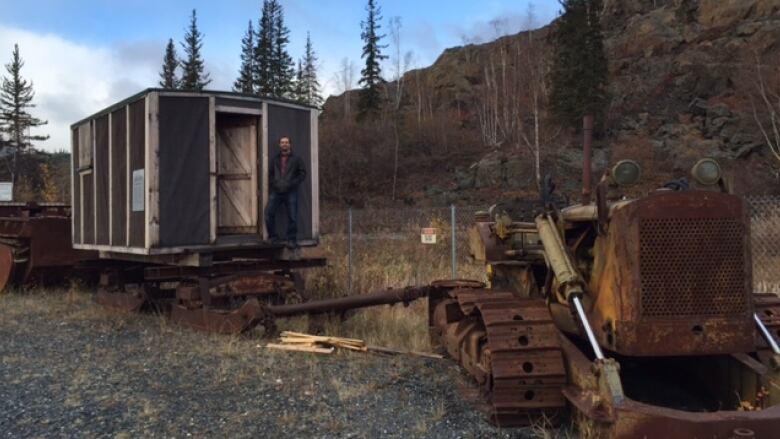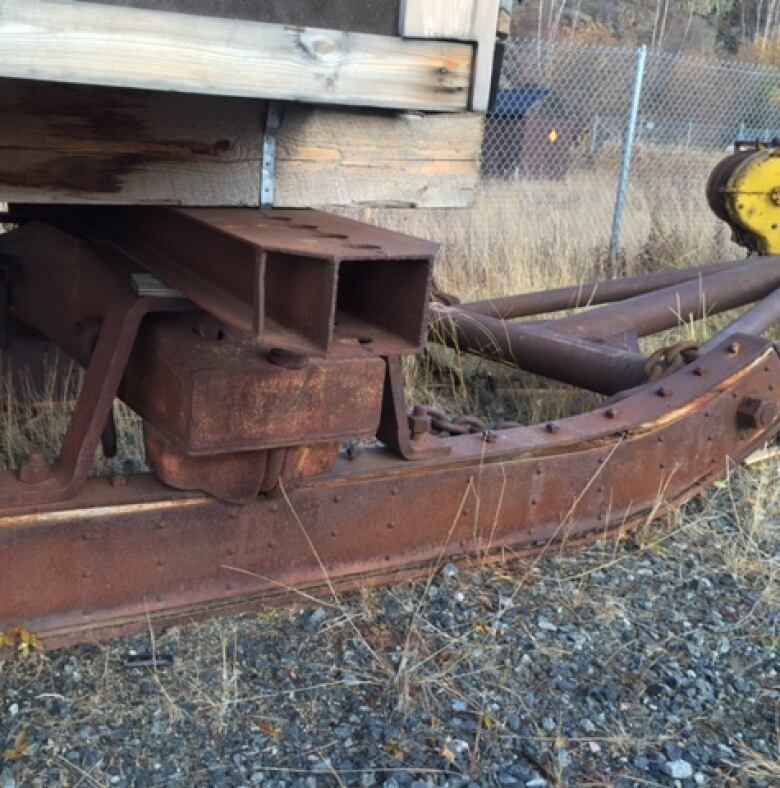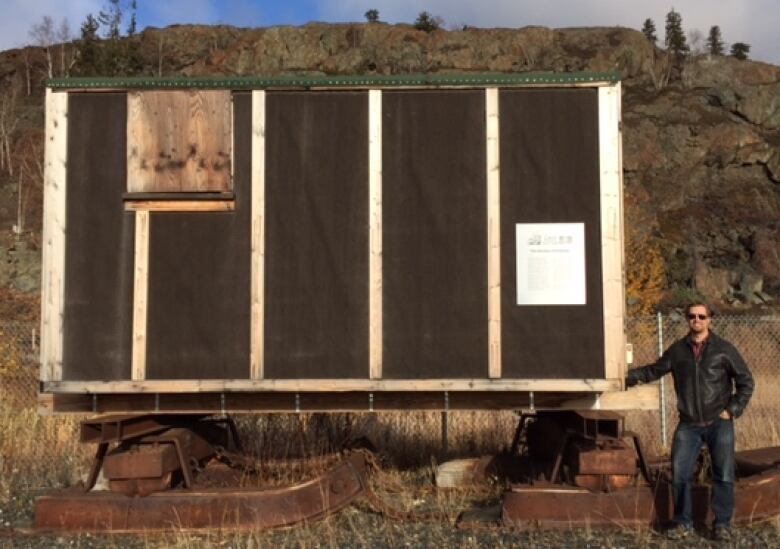Cat train used to transport freight in '40s on display
'It's a very harsh environment and you're going at a tractor's pace' says restorer about life on a cat train

Long before transportation trucks drove across ice roads in the North and became popularized by the TV series Ice Road Truckers, a lesser-known method of transporting goods in the winter existed.
Cat trains, used in the Northwest Territoriesstarting in 1938, were bulldozer-drawnsleigh convoys often used for transporting supplies to and from gold mines.
Ryan Silke, with the N.W.T. Mining Heritage Society, says low water levels in the Slave and Mackenzie rivers in the late '30s got freight operators thinking about new transportation corridors.

"The cat train became the standard for winter freighting."
Silke and the Mining Heritage Society have restored the caboose of onethese cat trains, now on display at the Giant Mine boat launch parking lot, outside of Yellowknife.
The caboose was donated by the son of Smokey Heal who, along with Del Curry, operated a freight-hauling business between Hay River and Yellowknife in the '50s.
Small space
The caboose, built onto a sleigh, is only about 10 square metres. Silkesays cat trains varied in size, with up to 10 freight sleighs pulled by one tractor. The name cat train comes from the bulldozer company Caterpillar.
Since the trip from Hay River to Yellowknife took about five days, Silke says the caboose may have had three bunks. That allowed one shift of men to always be working while the other was sleeping. Cramped living quarters was part of the deal.
"If you don't get along, you're not going to be working together," says Silke.
"When you're freighting across Great Slave Lake, I can't imagine that things are very fun. It's a very harsh environment and you're going at a tractor's pace."
'A dangerous job'

Silkesays the biggest Northern cat train near-miss happened in 1946, when the tractors of three convoys fell into a crack in the ice. Miraculously, the men and freight were spared.
"No loss of life, but definitely a dangerous job," says Silke.
Retirement
The cat train's role in the North was short-lived. Already by the '40s, people were thinking of news ways of freighting good in the winter, says Silke. Someone proposed ploughing roads and using transportation trucks as a much cheaper, faster and safer way of transporting freight.
"The winter ice road trucking industry was the the death kneel to the cat train technology," says Silke.
The development of modern highways in the '50s was the finalnail in the coffin, making cat trains obsolete.
Silkesays restoring this caboose and sharing it with the public is a way of celebrating the North's history.












_(720p).jpg)


 OFFICIAL HD MUSIC VIDEO.jpg)
.jpg)



























































































